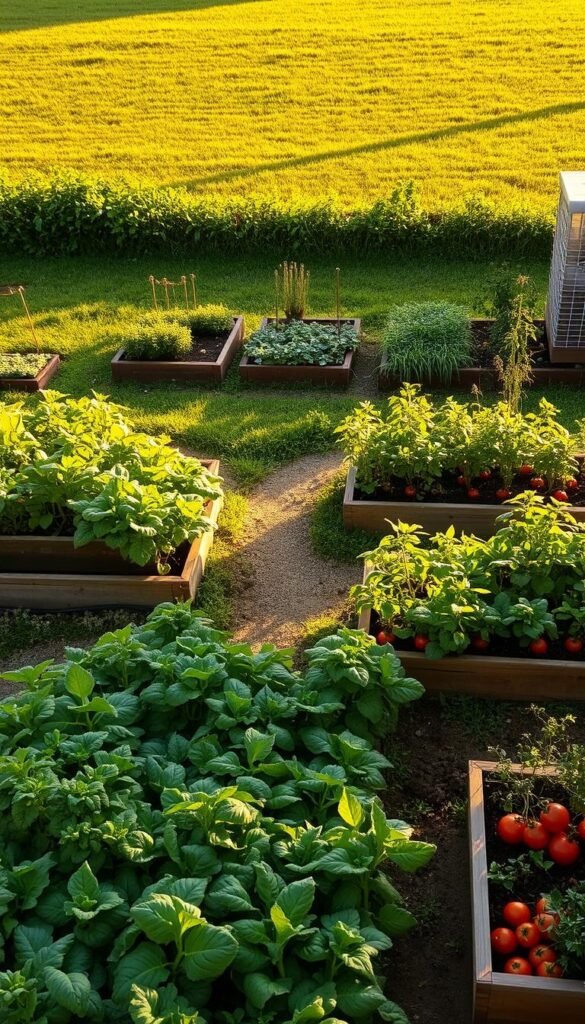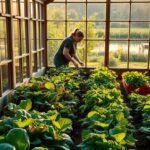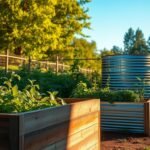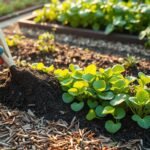What if your yard could become a source of delicious meals instead of weekend chores? Many homeowners are discovering the joy of replacing grass with edible landscapes. Take inspiration from an Alberta family who turned their entire property into a thriving food haven—even converting shaded areas and driveways into productive growing zones.
This approach isn’t just about saving time on mowing. Studies show well-planned green spaces reduce stress by 60% while boosting property value. Imagine stepping outside to pick sun-warmed tomatoes or crisp greens minutes before dinner. Plants grown in nutrient-rich soil—like the two-foot layer left by decades of cultivation in that Alberta lot—deliver unmatched flavor and nutrition.
You don’t need perfect conditions to start. Vertical planters and mobile containers make it possible to grow food in tight urban spaces or shaded corners. For example, wheelbarrow gardens can yield 20% more herbs than traditional beds. Explore creative gardening methods that turn unlikely spots into food-producing gems.
Every square foot matters. That Alberta property now feeds a family year-round using front and back areas plus a converted garage. Their story proves even modest spaces can become food powerhouses. Best part? You’re building a legacy—future generations will inherit fertile soil and fruit trees that keep giving.
Ready to trade grass stains for garden gains? Let’s dig into practical ways to create your edible paradise.
Understanding Your Yard’s Potential
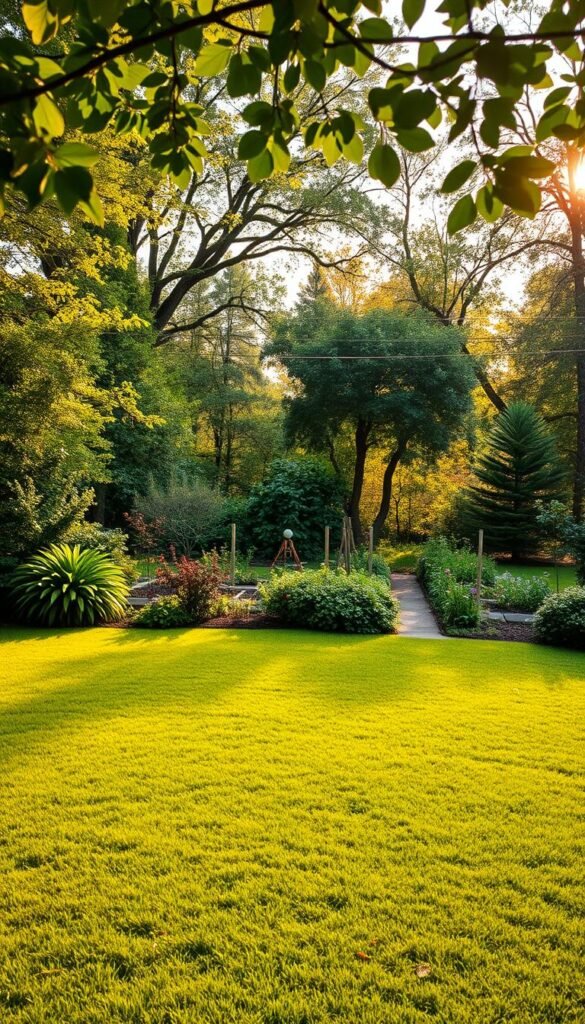
Unlock the secret potential lying dormant in every corner of your property. Before planting, take time to study your land’s unique characteristics. This step ensures you create a thriving edible space that works with your environment, not against it.
Assessing Space and Sunlight
Start by tracking sunlight patterns. Most crops need 6-8 hours of direct sun daily. Use a simple chart to record how light moves across your space:
| Time | Front Zone | Side Zone | Rear Zone |
|---|---|---|---|
| 8 AM | Partial shade | Full sun | Shade |
| 12 PM | Full sun | Full sun | Partial sun |
| 4 PM | Shade | Partial sun | Full sun |
Even shady spots near your house can grow leafy greens or berries. For tight spaces, consider compact planters. A 4×4 ft raised bed yields enough kale for weekly salads!
Evaluating Soil and Existing Features
Dig into your earth’s story. Squeeze a handful of moist soil—good structure holds shape but crumbles easily. Surprise nutrients often lurk where previous owners gardened. One client found 18″ of rich black earth beneath what looked like barren ground!
Turn challenges into advantages. Slopes become terraced herb gardens. Existing fences support climbing beans. Remember to check water access—position planters within hose reach for stress-free care.
Your land’s quirks make it special. That “problem” corner with morning shade? Perfect for growing crisp arugula. The sunny patch by the driveway? Ideal for tomatoes that’ll ripen faster than store-bought varieties.
Backyard Vegetable Garden Design: Transforming Lawn into a Bountiful Plot
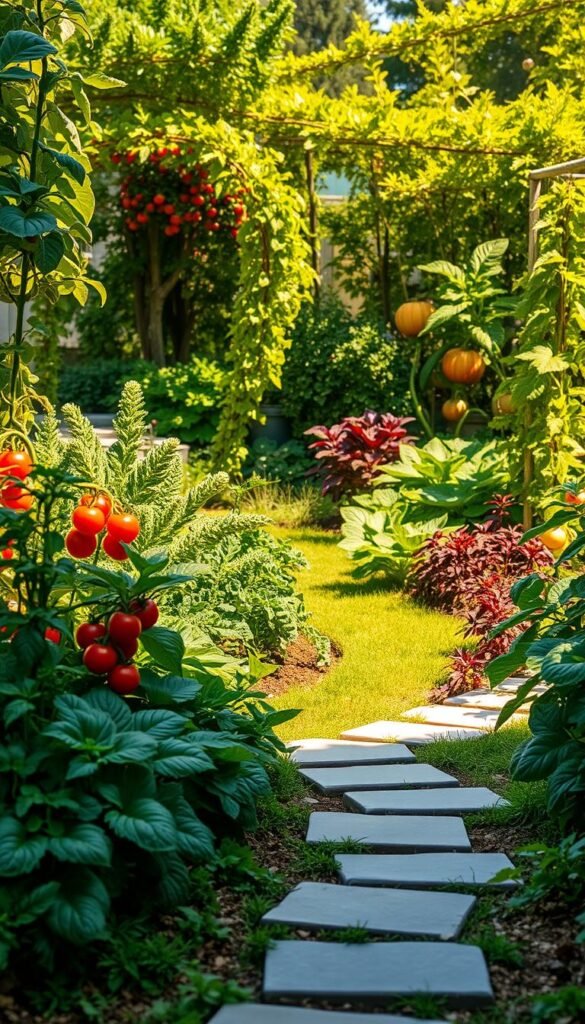
Ditch the lawnmower and discover how your land can nourish both body and soul. While turf demands constant attention, edible spaces reward you with tangible returns. Let’s explore how swapping grass for growth creates lasting value.
From Chores to Cherished Harvests
Traditional turf requires 40+ hours yearly of mowing and weeding. Replace that grind with:
- Sun-ripened strawberries picked during morning coffee
- Crisp salad greens harvested minutes before dinner
- Herbs that outpace grocery-store prices
One Ohio family traded their riding mower for raised beds. Now they grow 80% of their veggies while saving $150 monthly on groceries. Their secret? Repurposing existing sprinkler lines for drip irrigation.
Living Proof of Productive Possibilities
The Martins in Oregon turned their entire lot into food zones. Their former driveway grows blueberries in mobile planters. A converted garage shelters winter crops. Even their roof hosts trailing squash vines.
“Our grandkids call it the snack yard,” laughs Mrs. Martin. “They graze cherry tomatoes like candy while learning where real food comes from.”
These transformations create edible heirlooms. Fruit trees planted today could feed future grandchildren. Soil enriched through composting becomes richer yearly. Unlike lawns that drain resources, thriving plants build lasting wealth – both nutritional and emotional.
Step-by-Step Lawn-to-Garden Transformation
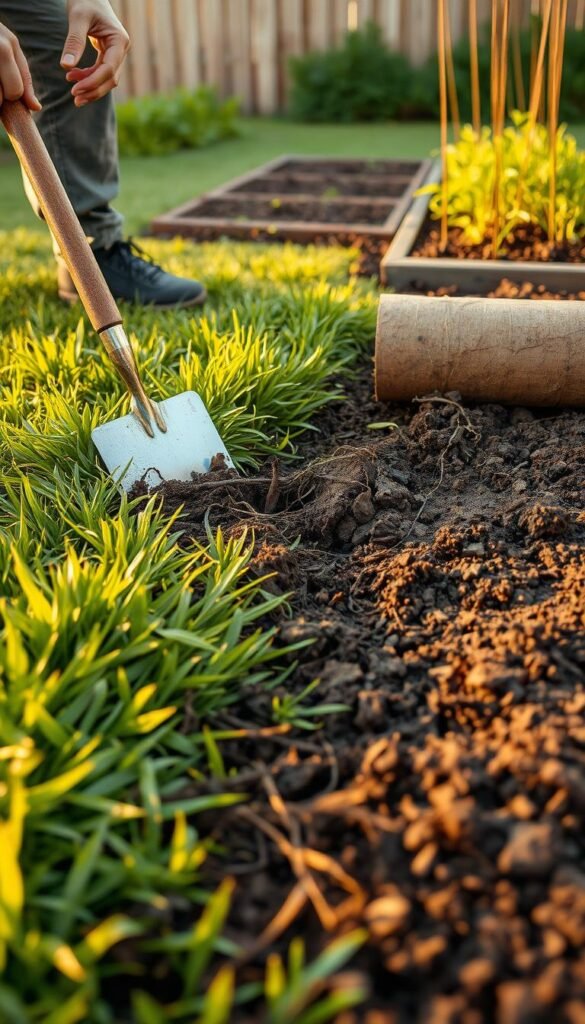
Say goodbye to lawn maintenance and hello to homegrown veggies. This hands-on guide walks through converting turf into fertile growing space. You’ll need basic tools and a weekend of work to create lasting change.
Preparing the Land by Removing Sod
Start by clearing grass efficiently. Rent a sod cutter—it slices through turf like a hot knife through butter. One pass creates clean strips you can roll up like holiday wrapping paper.
| Method | Time Required | Cost | Weed Control |
|---|---|---|---|
| Manual Digging | 8 hours | $0 | Moderate |
| Sod Cutter | 2 hours | $75/day | Excellent |
Move the rolled grass to a compost area. Those nutrient-rich clumps become black gold for future planting. Water the exposed earth lightly before building beds.
Building and Positioning Garden Beds
Construct simple frames using 2×10 lumber. These dimensions allow deep root growth for tomatoes and carrots. Arrange beds where they’ll get 6+ hours of sun—usually south-facing spots work best.
Follow this soil-building formula:
- Base layer: Cardboard sheets smother remaining grass
- Middle layer: 50/50 mix of topsoil and compost
- Top layer: Straw mulch retains moisture
The cardboard breaks down in 3 months, feeding earthworms. Your soil quality improves yearly as organic matter accumulates. Kids love helping fill beds—turn it into a math lesson by calculating soil volume!
Creative Garden Bed and Container Ideas
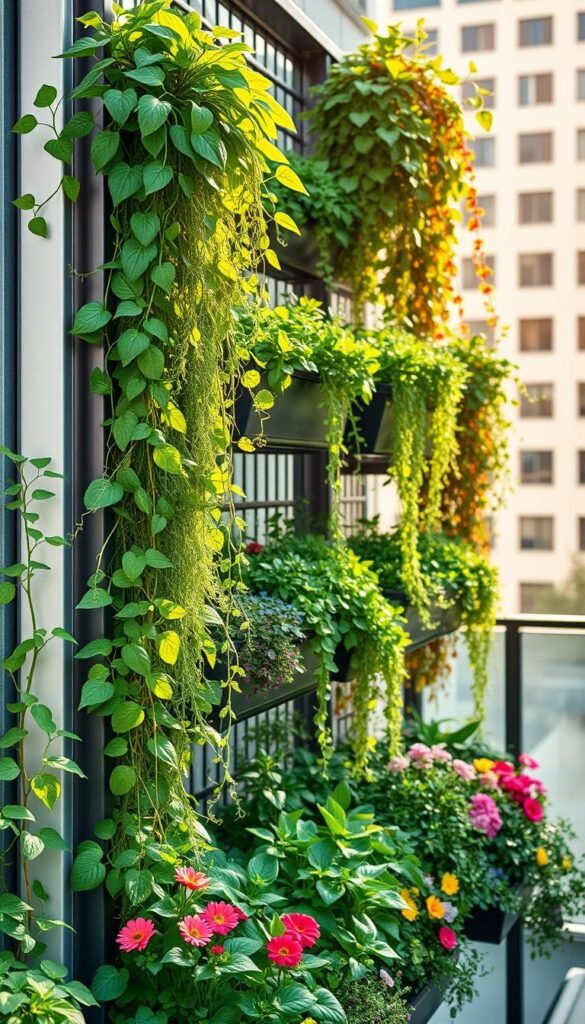
Your outdoor space holds more growing power than you might realize. Containers and vertical setups let you grow food anywhere while adding personality to your landscape. Whether you’re working with a balcony or sprawling yard, these solutions turn limitations into opportunities.
Exploring Raised Beds and Grow Bags
Elevated planters keep crops accessible and pest-resistant. Try cedar boards for natural rot resistance or recycled plastic for budget-friendly options. Grow bags shine for their portability—move sun-loving plants as shadows shift through seasons.
| Container Type | Best For | Depth Needed | Water Needs |
|---|---|---|---|
| Whiskey Barrel | Tomatoes, Peppers | 18-24″ | Daily |
| Grow Bag | Potatoes, Carrots | 12-14″ | Every 2 Days |
| Galvanized Tub | Lettuce, Herbs | 6-8″ | Every 3 Days |
Using Unconventional Containers and Vertical Designs
Repurpose forgotten items into conversation starters. An old sink becomes a herb station, while a wheelbarrow grows trailing strawberries. Vertical systems save space—try these:
- Hanging pockets for mint and thyme
- Wall-mounted gutters for microgreens
- Trellises supporting peas and beans
Bigger containers mean less watering stress. A 20-gallon planter keeps soil moist twice as long as small pots. Mix edible flowers like nasturtiums with your veggies—they attract pollinators while sprucing up your setup.
Designing Multi-Zone Gardens for Every Space
Your property holds hidden opportunities to cultivate fresh meals in unexpected spots. By dividing your space into specialized zones, you create a year-round food factory that works smarter, not harder. Let’s explore how to maximize every inch—from sunny corners to underused surfaces.
Dedicated Areas for Greenhouses and Indoor Gardens
Geodesic domes extend your growing season dramatically. These structures trap heat, letting you grow peppers and eggplants weeks earlier than outdoor beds. Pair them with indoor setups—sunny windowsills become herb stations, while LED-lit shelves grow microgreens even in basements.
One Michigan family uses their four-season greenhouse to harvest citrus fruits in January. Their secret? Thermal mass barrels that store daytime warmth. You don’t need fancy equipment—repurpose old storm windows into cold frames for frost protection.
Transforming Driveways and Small Outdoor Spots
That concrete slab parking cars can also produce food. Tower Gardens thrive here, yielding kale through snowstorms. Permanent beds with recycled window panes create microclimates—tomatoes ripen 3 weeks faster than neighbors’ plants.
Try stacking planters where cars usually park. A 10-foot driveway section holds 15 grow bags of strawberries. For vertical gains, train beans up trellises anchored in bucket planters. Even narrow side yards become productive when you use wall-mounted gutters for lettuces.
Every zone you create builds toward food security and flavor-packed meals. Whether nurturing seedlings indoors or harvesting driveway-grown greens, you’re crafting a living pantry that evolves with your needs. Start small, think multi-level, and watch your space transform bite by bite.
